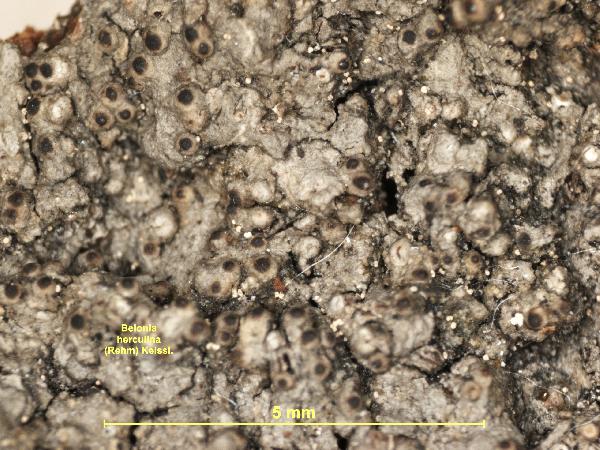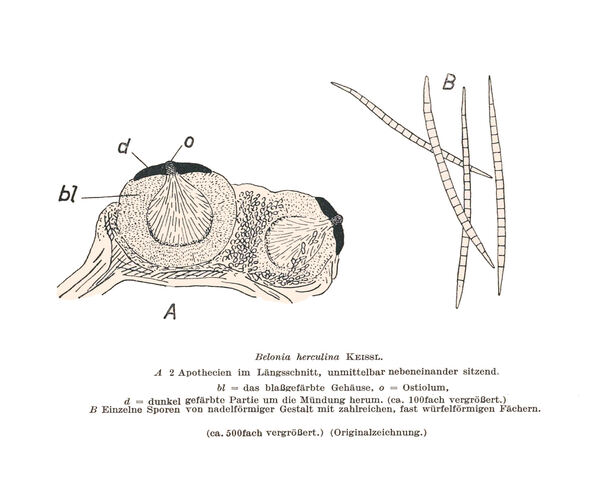Gyalecta herculina (Rehm) Baloch, Lumbsch & Wedin
in Baloch & al., Lichenologist, 45: 723, 2013. Basionym: Segestrella herculina Rehm - in Lojka, Mathem. Természettud. Közlem., 11: 62, 1876
Synonyms: Belonia herculana Hazsl.; Belonia herculina (Rehm) Keissl.
Distribution:
Description: Thallus crustose, thinly episubstratic, usually inconspicuous. Ascomata perithecioid, 0.3-0.5 mm across, pale yellowish brown, translucent when wet, the area around the apical pore dark brown. Proper exciple thick, yellowish, much darker around the ostiole; hymenium colourless, the hymenial gel I+ dull red (I+ blue at low concentrations of I), K/I+ blue; paraphyses slender, loose, septate, mostly simple, arising from the base of the ascocarp. Asci 8-spored, narrowly cylindrical, thin-walled, without apical thickenings, the wall K/I+ blue. Ascospores 20-30-septate, hyaline, needle-like, 100-140 x 3-4 μm, with cylindrical cells. Photobiont trentepohlioid. Spot tests: thallus K-, C-, KC-, P-, UV-. Chemistry: without lichen substances.Note: on bark of broad-leaved trees, especially Fagus, usually near the base of trunks; rare in SE Europe, with a single record from the Eastern Alps (Slovenia). To be looked for in Italy.
Growth form: Crustose
Substrata: bark
Photobiont: Trentepohlia
Reproductive strategy: mainly sexual

Predictive model

United States National Herbarium - Smithsonian (US:Lichens) - Collector: A. Vězda
Number: 155 Date: 1958-05-11 Locality: Czechoslovakia, Bohemoslovakia, Carpati, montes Strazovska hornatina: in monte "Strazov". Elevation: 1100 meters (3608ft) Habitat: Wood
- CC BY-NC 3.0 - Source: Consortium of Lichen Herbaria (2023) http//:lichenportal.org/portal/index.php. Accessed on December 14.
Growth form: Crustose
Substrata: bark
Photobiont: Trentepohlia
Reproductive strategy: mainly sexual

Predictive model

 INDEX FUNGORUM
INDEX FUNGORUM
 GBIF
GBIF



